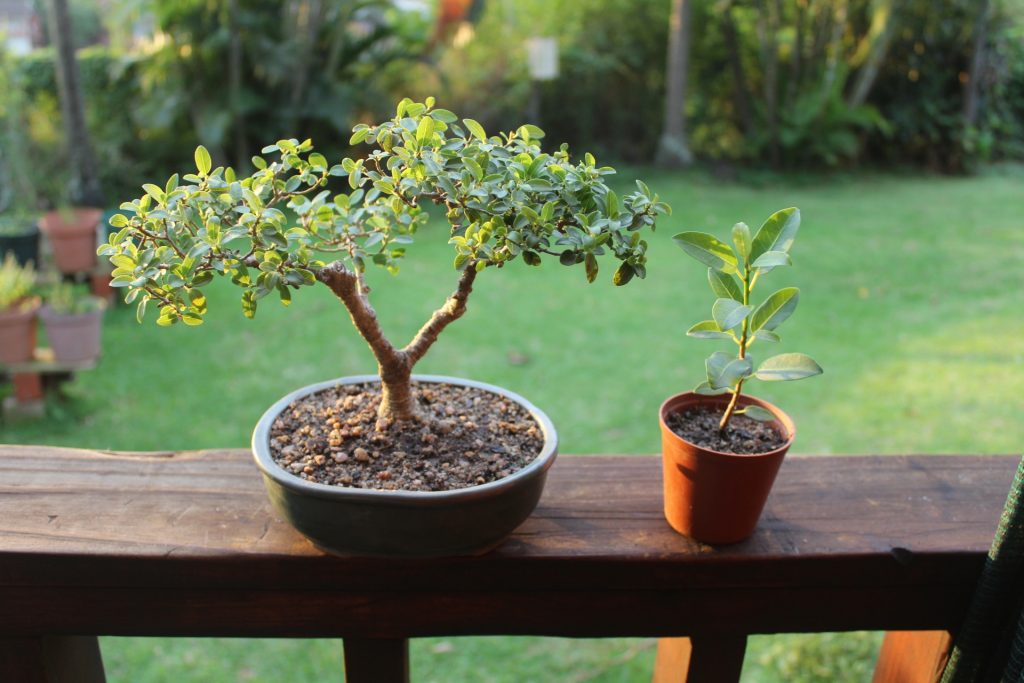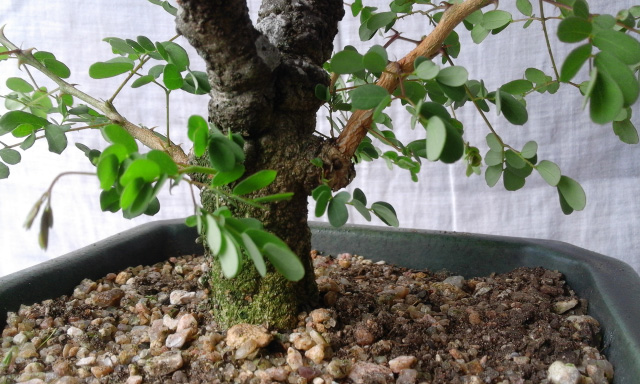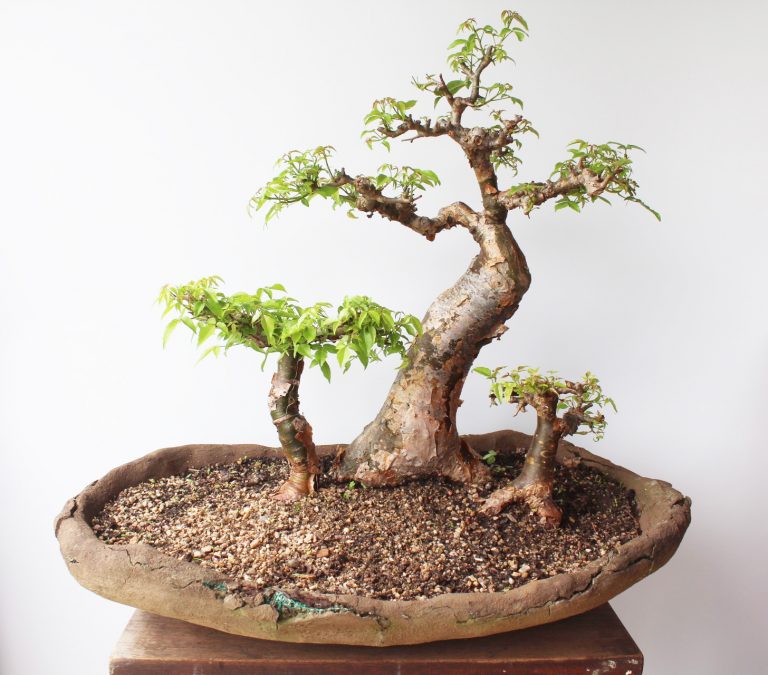Reducing Leaf size

One of the most critical aspects of creating beautiful bonsai is reducing the size of the leaves. It is quite easy to see that the illusion of a miniature tree is enhanced by the presence of smaller, more numerous leaves rather than a few large leaves. Also, it is more beneficial to the tree to have numerous smaller leaves rather than a few large leaves because it will lose less moisture with many smaller leaves. If some leaves get eaten by animals or insects, there will still be enough leaves for the plant to survive.
Defoliate your trees mid-summer.
Actually, simulating the browsing of animals is one of the key aspects to reducing the size of the leaves. Nature produces in abundance. This means if some leaves are removed from a tree, the tree’s response is to produce significantly more leaves than the number removed. This is because the tree presumes that some of its leaves will be eaten, so it over-produces to counter this. Somewhere towards the middle of summer, when the spring leaves have become old and leathery, we remove most of them. This is called defoliating. It is only done with deciduous trees. Never defoliate evergreen trees like pines and junipers, they will die.
Leave a small stump.
I very seldom remove ALL the leaves of any tree. Using sharp, clean pruning scissors remove about half of the leaves. Cut through the stalks of the leaves, leaving a small stump behind. The little stump will dry out and fall off in a short while. With a significant amount of leaves removed the tree will think it has been browsed by animals and put out a new crop of leaves. These new leaves will be much more numerous than those that were removed so the plant will automatically keep them smaller. The work load of making sap is spread across many more leaves, reducing the stress on the plant. This is of course beneficial to the tree.
Sunlight is the key.
When it comes to reducing the size of leaves, sunlight is the key ingredient. The more sunlight a plant receives the smaller the leaves can be to produce the same amount of nutrients. More sunlight means the leaves have to work less. Trees that grow in the shade are always seeking out more sunlight. As a consequence they grow long thin branches with large leaves to enable them to make the most of the reduced sunlight. This is not good for bonsai. We refer this growth pattern as being “leggy”. When bonsai are grown in full sunlight the branches grow shorter and more compressed with shorter internodes. Nodes are the points where new leaves and shoots appear from, and internodes are the spaces between the nodes. For bonsai, we want the internodes to be a short as possible to enable more, smaller branches to grow. More smaller branches means more, smaller leaves which is the whole point.
What happens above ground is mirrored under the soil.
A bonsai is its own complete world. What happens above the soil is directly related to what happens below. A bonsai that only has one or two sparse roots is unlikely to produce a lovely crop of new leaves after defoliating. It will most likely die. Only defoliate healthy trees with healthy root systems. Healthy root systems need coarse fast draining soil to develop. So, reducing the size of the leaves is directly related to soil quality. Sunlight, water, and fast draining soil are the key ingredients to any and all bonsai.
Small pots restrict root growth leading to smaller leaves.
There is one other thing that all bonsai have in common, a pot or container. We sometimes plant young bonsai directly into the ground in order to get them to grow as large as possible, as quickly as possible, but this is just a training phase. Their trunks may thicken up quickly, and they will develop branches quickly as well, but their leaves will remain large until they are planted in a pot. Only when a tree’s roots are restricted in their growth will a tree begin to reduce the size of the leaves. While the roots have lots of space to spread out and find nutrients in the soil the tree will grow vigorously, and consequently produce large leaves in order to supply the demand for sap. It takes a certain amount of time for the tree to stabilise in its pot. This amount of time varies from one species to the next, and even from one tree to the next, but eventually a balance between the amount of soil, and nutrients available is reached, and the plant’s furious growth spurt, know as the vegetative phase, slows down. The plant is now in a mature phase, and can finally begin to reduce the size of the leaves.
Trees can change from a mature state to a vegetative state at any time.
All young trees are in a vegetative phase by default. It generally takes about five years for trees to change to a mature phase, depending on the species. However, trees can switch from mature phase to vegetative phase, for almost any reason, at any time. Any major work, pruning or re-potting, on a bonsai tree is likely to switch the phase from mature to vegetative. The tree simply changes gear to find the nutrients in order to repair any “damage”. If the “damage” is light, the tree will remain in a vegetative phase for only a short while, and will soon be producing smaller leaves once more. Over-feeding will also switch the phase to vegetative in order to use all that lovely plant food.
Very old trees produce very small leaves.
Really mature trees need to be treated differently to young bonsai. These are trees that are decades old or older. Mess as little with old trees as possible. Don’t remove too many leaves when defoliating, and only give them weak solutions of plant food to prevent them from growing wild. They will reward you by producing wonderful clouds of tiny leaves, and they will remain in their mature phase for many years. After a few years, a mature bonsai might begin to show a loss of vigor. It just begins to look a bit tired. To rejuvenate the plant, remove it from its pot, gently. Loosen the edges of the root ball, just a little bit, trimming the root ends if possible. Then plant the tree in a larger garden pot that has a sandy, coarse soil mix. Even pure river sand is good. The new space and soil will enable the roots to renew themselves, and the plant will show a new lease of life. But, remember, the leaves will suddenly get much larger in size for a season or two. Once the tree has regained its health it can be potted back into a display pot.




